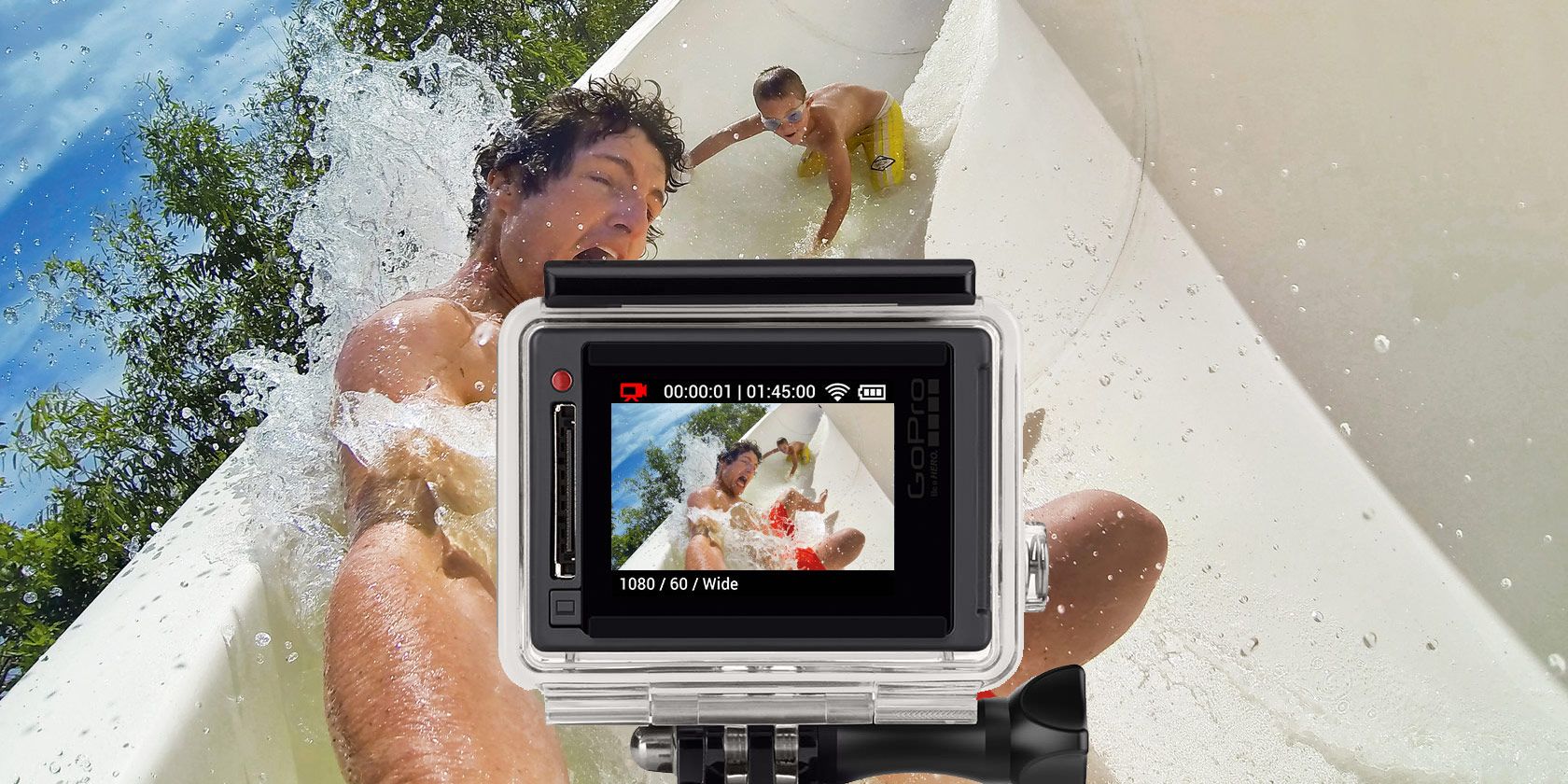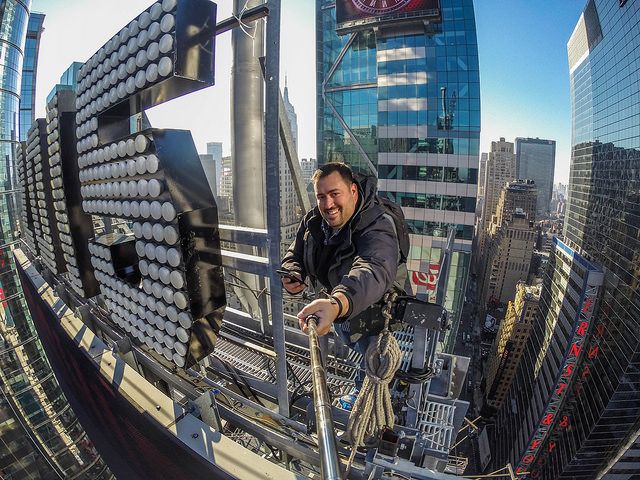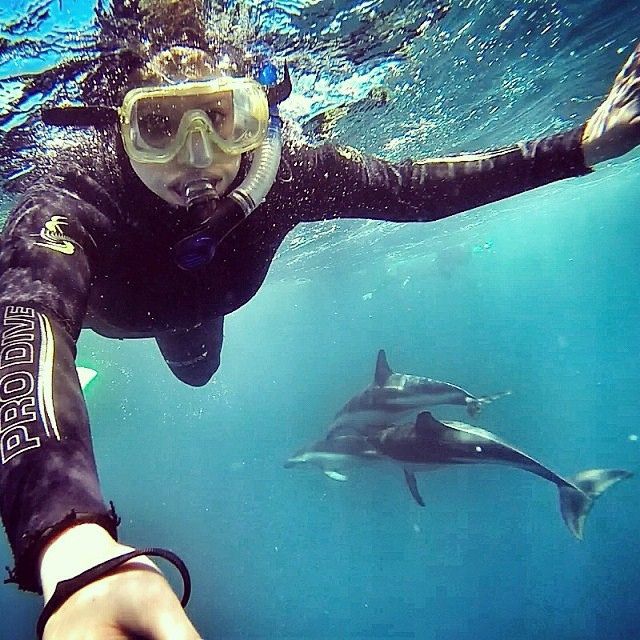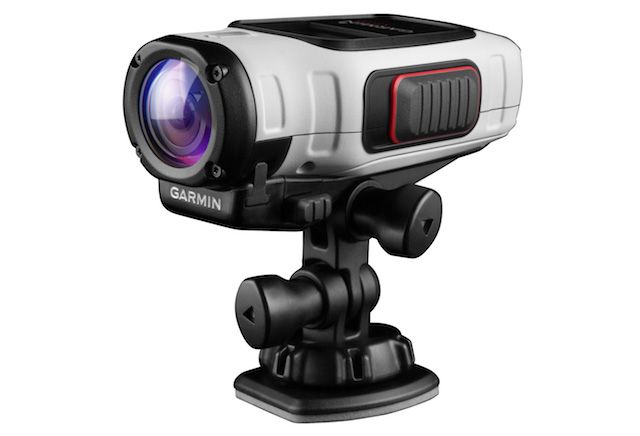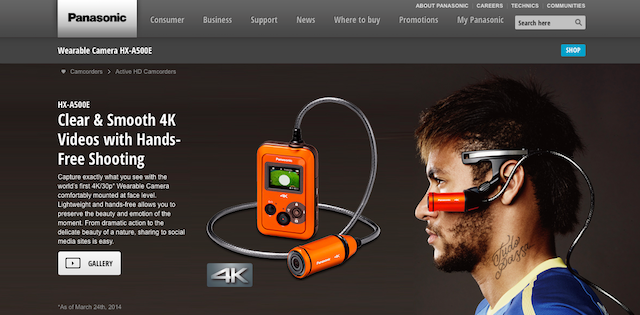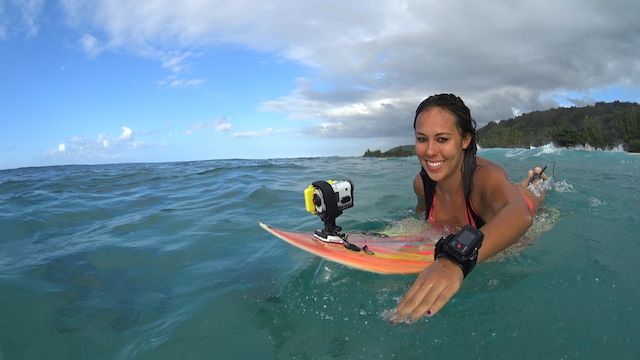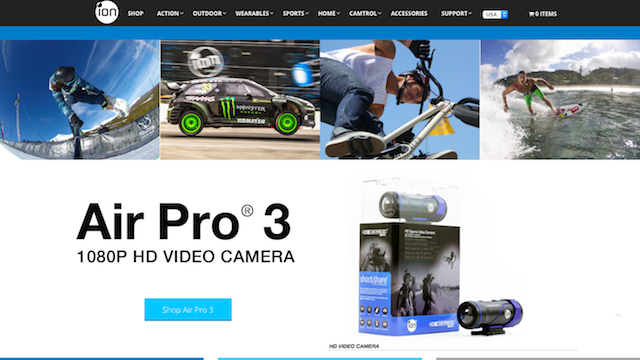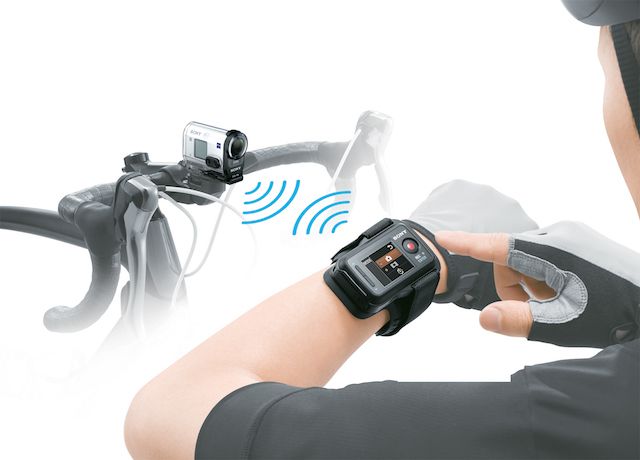If you're into skiing, cycling or surfing, then an action camera is the perfect way to record your adventures.
GoPro videos are everywhere, thanks to the fact that these tiny, rugged cameras can shoot almost anywhere.
But GoPro isn't the only manufacturer, and with so many different models now flooding the market, it can be hard to decide which action camera to buy.
In this guide, we'll take a look at the key points you need to know about action cameras, to help you find the one that's right for you.
1. What is an Action Camera?
An action camera is a tiny, lightweight video camera that can produce high-quality, wide-angle video in almost any environment.
They are either ruggedized, or attain ruggedness by sitting inside a housing, and support a large number of mounts that enable them to be fixed to anything — a surfboard, a helmet, your chest and so on. For this reason, they're very popular for extreme sports.
Action cameras are designed to be trivial to use. A typical setup would see just three buttons — power, start/stop recording and settings.
Most have a small LCD screen to provide basic information and access the settings. A few (like the Garmin VIRB Elite HD Camera) have screens to view your videos, but in most cases there simply isn't room for one.
2. What is the Field of View?
Every action camera has a fixed, wide-angle lens with a focal length typically in the region of 17mm to 20mm (at 35mm equivalent). Depending on the size of the sensor, this gives a field of view of around 140 degrees, up to 170 degrees in the GoPro HERO4 Black or some Sony Action Cam models.
This wide field of view creates an immersive experience, and roughly equates to the field of view of human eyesight.
However, such a wide angle does also create a fisheye effect, where straight lines become increasingly curved the nearer they get to the edge of the frame.
The effect gives action camera footage a unique style, and it could be argued that this distortion has become the expected norm for action video. But some users aren't keen on it.
Remove the Fisheye Effect From Action Camera Video
The fisheye effect can be fixed. The GoPro Studio software for editing GoPro videos has a "Remove Fisheye" setting, as do many image and video editing applications.
Some action cameras also include settings that enables you to shoot at narrower angles. These don't work by changing the focal length of the lens, but simply use a smaller part of the sensor — effectively cropping out the distorted areas around the edges.
Because you aren't using the full sensor, there are often limitations on resolution and quality when shooting in these modes. 4K recording, for instance, isn't possible.
3. How Tough is it?
A prerequisite for an action camera is that it is tough enough to shoot in any environment.
Traditionally, most use a clear plastic housing, included in the box, to provide protection from the elements. The GoPro HERO4 is waterproof up to an impressive 131 feet, for instance.
But newer cameras are also being built as waterproof without the need for a housing. The iON Air Pro 3 is waterproof to 49 feet, the GoPro HERO4 Session to 33 feet, and the Garmin VIRB Elite to around three feet.
Many Sony Action Cam models are described as "splashproof". In all cases, you can still place the camera in a housing to increase the water protection.
You will also need a case if you want serious protection against dust or shock. For extreme environments, you should check the operating temperatures within the camera's functioning capabilities, too.
Form Factor Issues
When it comes to size and design, smaller and lighter are most definitely preferable. This is a natural part of the evolution of the technology, as newer models are generally lighter than the previous generation.
There are also different form factors to consider.
Niche form factors are also available for specific uses. The Panasonic HX-A500, for example, is designed to be clipped over the ear for hands-free operation.
4. How Long Can It Shoot?
A lot of action camera manufacturers don't provide battery life quotes in their specifications. Where they do, we can determine that most cameras offer anywhere between one and three hours of use.
The actual life you get can vary considerably based on many factors. Shooting at higher resolutions — especially 4K — uses more power, as do higher frame rates. Having Wi-Fi turned on drains the battery quicker, and extremes of temperature also have an effect. You can expect your battery life to be noticeable shorter if you're shooting in sub-zero temperatures.
You can replace the battery in all cameras, but the price can vary wildly between brands, as well as the availability of third party options. The list price of a GoPro HERO4 battery, for example, is $15 on Amazon; for a Garmin VIRB Elite it's almost double at $26.80.
Also remember that the battery compartment is enclosed within the camera's housing. Depending on where you are shooting, changing batteries may not always be possible.
5. What Does It Shoot?
MP4 is the standard format for action cameras. It's used by GoPro, Sony, Garmin, iON and others. MP4 is a good option; it has a high quality to size ratio, and can be uploaded to YouTube or other online video services without needing to be processed in another application.
Virtually all current models will shoot 1080p resolution, with newer, high-end cameras going up to 4K. They shoot to memory cards, and a large, fast one (Class 10) is needed.
Frame Rates
Cameras shoot at a range of frame rates, usually from 24fps — for softer, more cinematic-style footage — up to 60fps for a crisper effect familiar with sports and action video.
120 frames per second and more is becoming common. This enables you to create smooth, high-quality slow motion videos. Higher frame rates are more taxing on the hardware, and require more data to be written to the card. As a result, they're often only available at a lower resolution. Shooting at 240fps on the GoPro HERO4 Black, for instance, is only possible at 720p resolution.
Action cameras will also shoot stills at the maximum resolution allowed by the sensor, as well as a few extras such as time-lapse videos.
6. Where Can you Mount it?
Being able to use an action camera in a variety of environments isn't just about being small and tough. It also needs to be flexible enough to work with your other equipment.
If you're using it when surfing, or cycling, or skiing, you're going to need a way to mount the camera to your board, bike, or helmet. If you want to use it handheld, attach it to a drone or harness it to your dog, you'll need mounts for those things, too.
The ecosystem is a major factor to consider. GoPro has the largest, with a massive selection of first and third party accessories. Most other brands are covered for the essentials, but may be found lacking if you require something more niche.
At a push, you can also build your own mounts.
Other Manufacturer Differences
GoPro is the leading name in action cameras, but other manufacturers do offer additional benefits.
GoPro cameras share the same boxy design, but sometimes other form factors are more suitable. The "bullet" style, seen on devices like the iON Air Pro 3, is popular among cyclists, or for head mounting, for example.
Some manufacturers, including Sony, also offer image stabilization, something that GoPro doesn't have. This produces far smoother video. It's not quite up to steadicam levels, but is free from much of the jerkiness associated with action camera video.
Stabilization in action cameras is digital, so where it is implemented you either lose some of the width from the field of view or have to shoot at a lower resolution.
7. Connectivity, Cards and More
As we've already said, you need the fastest memory card you can get for best performance. A card that isn't fast enough will cause frames to be dropped, resulting in jerky video.
Class 10, therefore, is the minimum you need. Preferably the camera will support the UHS-II standard, giving you write speeds of more than 250MB/s in the most high end cards.
Wi-Fi
Some cameras also offer built-in Wi-Fi capabilities. This isn't just for the easy transfer of video from the camera to your PC (or upload to the web). It can also be used for accessories, such as the Live View Remote for the Sony Action Cam range, and even live streaming.
A Wi-Fi enabled action camera can also be controlled remotely via a smartphone. All the major brands have apps for iPhone and Android that include remote controls, playback and even basic editing functions.
It's a useful feature to have, especially on a camera that doesn't have a screen for playback.
It's a Wrap
Action cameras are booming in popularity. And as they get smaller and more powerful, that is only going to continue.
But while they're built for simplicity and ease of use in environments where you don't want to be fiddling with controls, there's more points to consider when buying one than you might have realised.
By understanding the importance of the ecosystem, and differences in the field of view and the quality of the video, you can pick the action camera that is perfect for your needs.
Do you own an action camera, or are you looking to buy? Share your thoughts in the comments below — as well as any action videos you've already shot.
Image credits: GoPro underwater via Frontierofficial, Bike via phrawr, GoPro fisheye via Anthony Quintano

